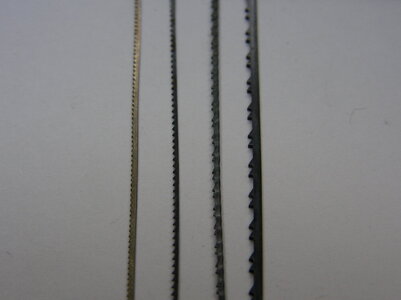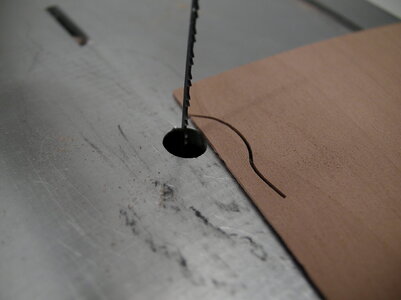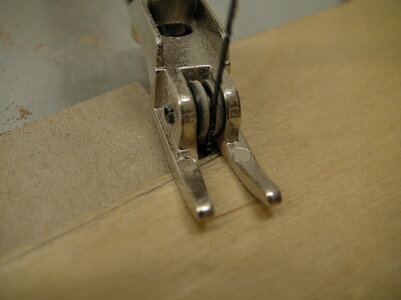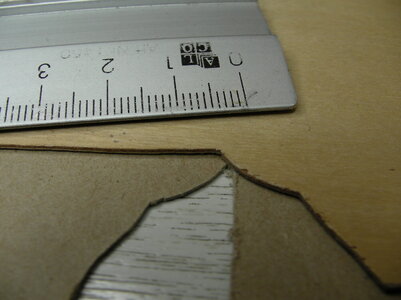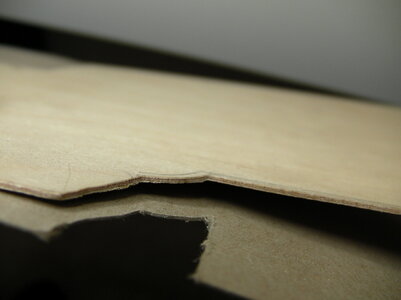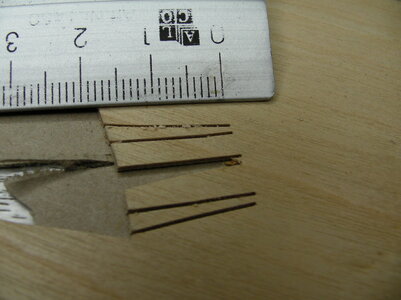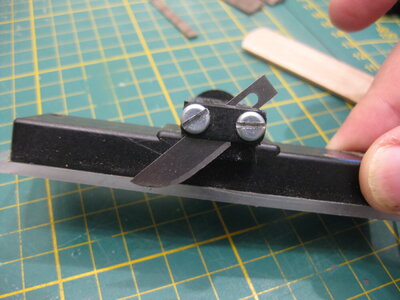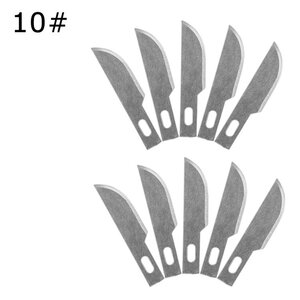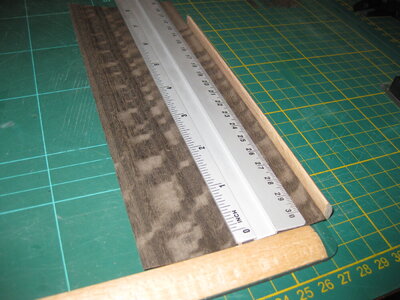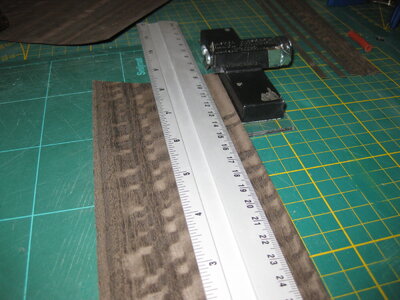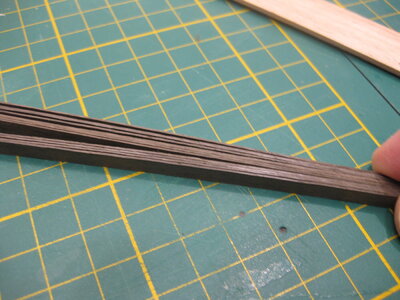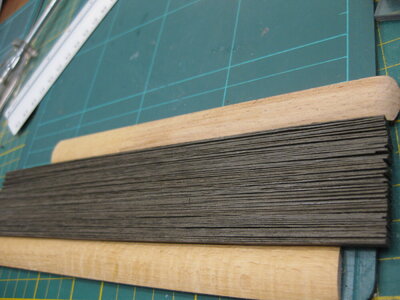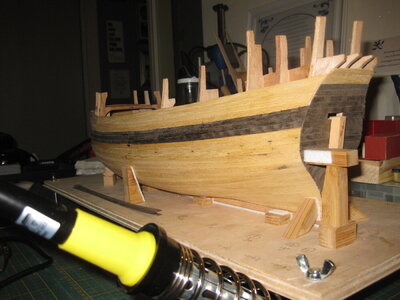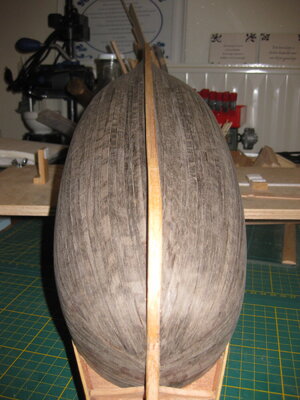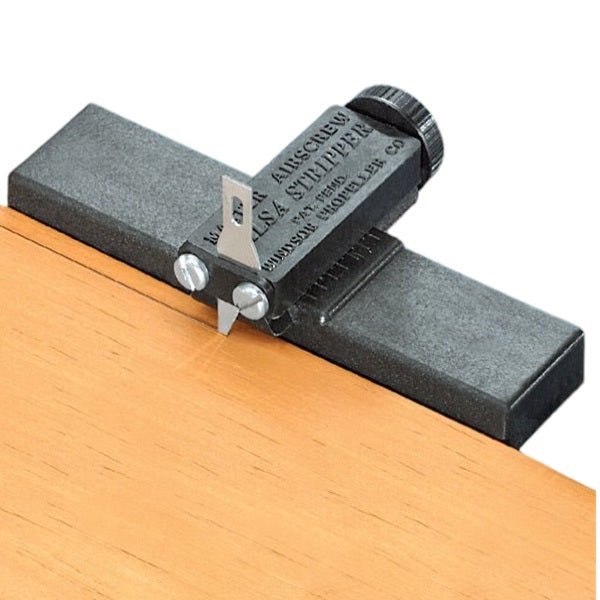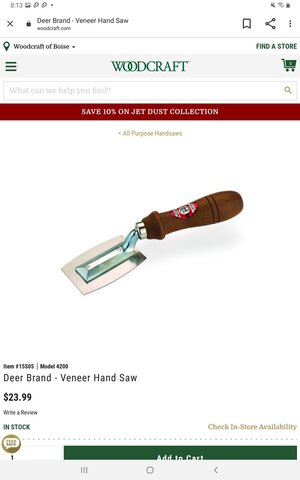I wonder if anyone has the solution to cutting very thin wood sheet veneer.
I have started to make the Viking boat "Oseberg" by Billing which I have had stored away for many, many years (perhaps about 30). The side planking parts that I have in the kit are printed on 1mm fine grain wood sheet (there were no laser cut parts for models in those days). As many of you might know that are familiar with the boat, the planking is shaped to the curve of the boat and printed on the sheets, which means the parts curve across the grain. Cutting along the length of the planking pieces that run with the grain is not a problem but when the shape curves across the grain and narrows to a point this is where the problem of splitting or the point of the piece braking off.
I am using a 25tpi blade in a powered scroll/jig saw, so I get a reasonably smooth cut. The throat on the machine is 8mm wide so I thought I might cover it and reduce it right down to just 1mm wider than the blade so to give more support to the thin wood. I have tried sticking paper onto the parts, this works to some degree but if I remover the paper the point of the part will inevitable split and come off. I have thought about double sided sticky tape but not sure if this will not degrade or shrink over time.
Any help or suggestions will be gratefully received.
I have started to make the Viking boat "Oseberg" by Billing which I have had stored away for many, many years (perhaps about 30). The side planking parts that I have in the kit are printed on 1mm fine grain wood sheet (there were no laser cut parts for models in those days). As many of you might know that are familiar with the boat, the planking is shaped to the curve of the boat and printed on the sheets, which means the parts curve across the grain. Cutting along the length of the planking pieces that run with the grain is not a problem but when the shape curves across the grain and narrows to a point this is where the problem of splitting or the point of the piece braking off.
I am using a 25tpi blade in a powered scroll/jig saw, so I get a reasonably smooth cut. The throat on the machine is 8mm wide so I thought I might cover it and reduce it right down to just 1mm wider than the blade so to give more support to the thin wood. I have tried sticking paper onto the parts, this works to some degree but if I remover the paper the point of the part will inevitable split and come off. I have thought about double sided sticky tape but not sure if this will not degrade or shrink over time.
Any help or suggestions will be gratefully received.





